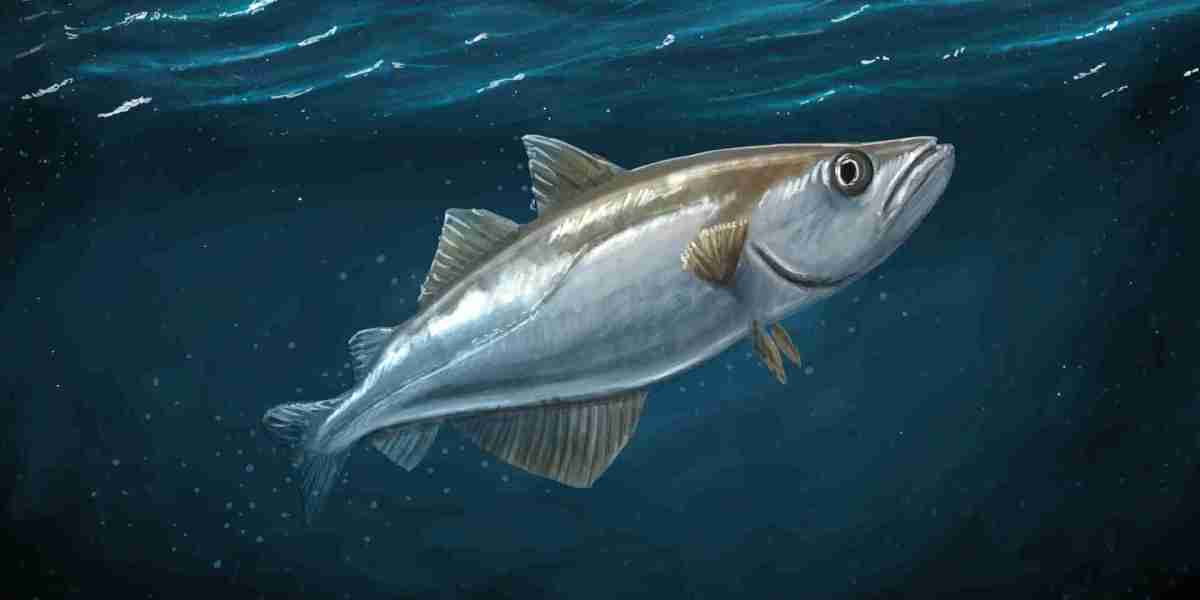Wild Pollock Market Expansion: Charting New Frontiers in Global Seafood Trade
The wild pollock market has traditionally been viewed as a stable, high-volume segment of the global seafood industry. Driven largely by the abundant Alaska pollock (Gadus chalcogrammus), it has long supplied whitefish for products such as fish sticks, frozen fillets, and surimi (used in imitation crab and seafood snacks). In recent years, however, the wild pollock market has entered a new phase—one marked by diversification, innovation, and geographic growth.
As demand for affordable, nutritious, and sustainable seafood continues to rise worldwide, wild pollock is finding new pathways to market expansion. This blog post explores the drivers, dynamics, and implications of that expansion, highlighting the species’ growing influence in global trade, product development, and consumer diets.
A Strong Base: Production and Sustainability
At the foundation of wild pollock market expansion lies a robust and well-managed supply. The world’s two largest producers the United States and Russia harvest millions of metric tons of wild pollock annually, accounting for more than 95% of global supply.
- U.S. (Alaska) Pollock: Caught primarily in the Bering Sea and Gulf of Alaska, U.S. wild pollock fisheries are certified by the Marine Stewardship Council (MSC) and follow strict science-based quotas. This ensures long-term stock health and provides a trusted sustainability narrative that appeals to global buyers.
- Russian Pollock: The Russian fishery, based largely in the Sea of Okhotsk, is similarly high-volume and has made progress toward greater transparency and eco-certification, though geopolitical tensions have disrupted its market access in some regions.
These reliable and large-scale supply chains give wild pollock a unique advantage: the ability to meet rising demand without sacrificing sustainability. This scalability is crucial to its ongoing expansion.
Geographic Market Expansion
Historically, wild pollock has been consumed predominantly in North America, Europe, and Northeast Asia. Today, the market is rapidly expanding into new regions as demand for affordable, protein-rich foods grows.
- Asia-Pacific: China, Japan, and South Korea remain top consumers of pollock, particularly in surimi form. However, demand is also rising in Southeast Asia—Vietnam, Thailand, and Indonesia—driven by growing middle classes and urbanization.
- Middle East and North Africa (MENA): Countries across the Gulf and North Africa are exploring pollock imports as cost-effective, halal-certified seafood options, particularly for foodservice and institutional use.
- Latin America and Sub-Saharan Africa: In emerging markets with expanding populations and rising food security concerns, wild pollock is being promoted as a versatile protein solution for both local consumption and humanitarian aid programs.
These regions represent new frontiers for exporters and distributors, offering opportunities for growth beyond traditional markets.
Product Innovation and Value-Added Offerings
A major driver of wild pollock market expansion is the development of new product formats that appeal to evolving consumer tastes and lifestyles.
- Ready-to-Cook and Ready-to-Eat Meals: With time-strapped consumers seeking convenient and nutritious meals, manufacturers are introducing pollock-based entrees, protein bowls, and flavored fillets tailored to retail and e-commerce channels.
- High-Protein Snacks: Pollock jerky and surimi sticks are gaining popularity as portable, health-focused snacks, especially in fitness and wellness markets.
- Pet Food and Nutraceuticals: Secondary products like pollock oil and protein powder are being utilized in premium pet food formulations and dietary supplements, expanding pollock’s reach beyond human consumption.
- Alternative Protein Solutions: As interest in seafood-based meat alternatives rises, pollock’s mild flavor and lean profile make it an ideal base for seafood burgers, plant-forward meals, and hybrid protein blends.
This innovation is allowing pollock to compete not only with other whitefish but also with meat, poultry, and plant-based proteins across global menus.
Supply Chain Investments and Strategic Shifts
To support expansion, industry players are investing in supply chain improvements and strategic partnerships:
- Processing Infrastructure: Both the U.S. and Russia are increasing at-sea and onshore processing capacity to deliver higher-value products and reduce reliance on third-party reprocessing in Asia.
- Cold Chain and Logistics: Improved cold storage, transportation, and traceability systems are enabling pollock to reach new markets in peak condition.
- Branding and Marketing: Companies are repositioning pollock as a premium, sustainable protein rather than just a low-cost commodity. Labeling initiatives that emphasize origin, certification, and nutritional benefits are gaining traction among health-conscious consumers.
- Digitalization: The adoption of digital traceability tools and blockchain systems is increasing transparency across the pollock supply chain, which is a key demand of modern retailers and regulators.
These strategic moves are helping ensure that the market infrastructure can keep pace with rising demand.
Opportunities and Challenges Ahead
The expansion of the wild pollock market presents both opportunities and challenges:
Opportunities:
- Capture new demand in emerging markets
- Diversify product offerings to meet consumer trends
- Strengthen pollock’s positioning as a sustainable alternative to overfished species
Challenges:
- Navigate geopolitical disruptions (e.g., Russian export restrictions)
- Address environmental uncertainties affecting biomass and distribution
- Maintain price competitiveness amid inflation and logistical cost increases
Successful market expansion will depend on how effectively industry stakeholders adapt to these challenges while capitalizing on pollock’s core strengths.
Conclusion
The wild pollock market is no longer just about volume and affordability it’s about adaptability, innovation, and global relevance. With its strong sustainability credentials, versatile applications, and expanding geographic footprint, wild pollock is positioned to grow well beyond its traditional boundaries.
From Southeast Asia to Latin America, from retail shelves to pet food aisles, the expansion of the wild pollock market is a compelling story of how a humble whitefish is meeting the moment in a changing food landscape. As the industry continues to evolve, pollock is proving that with the right strategies and investments, even a mature market can experience exciting new growth.




